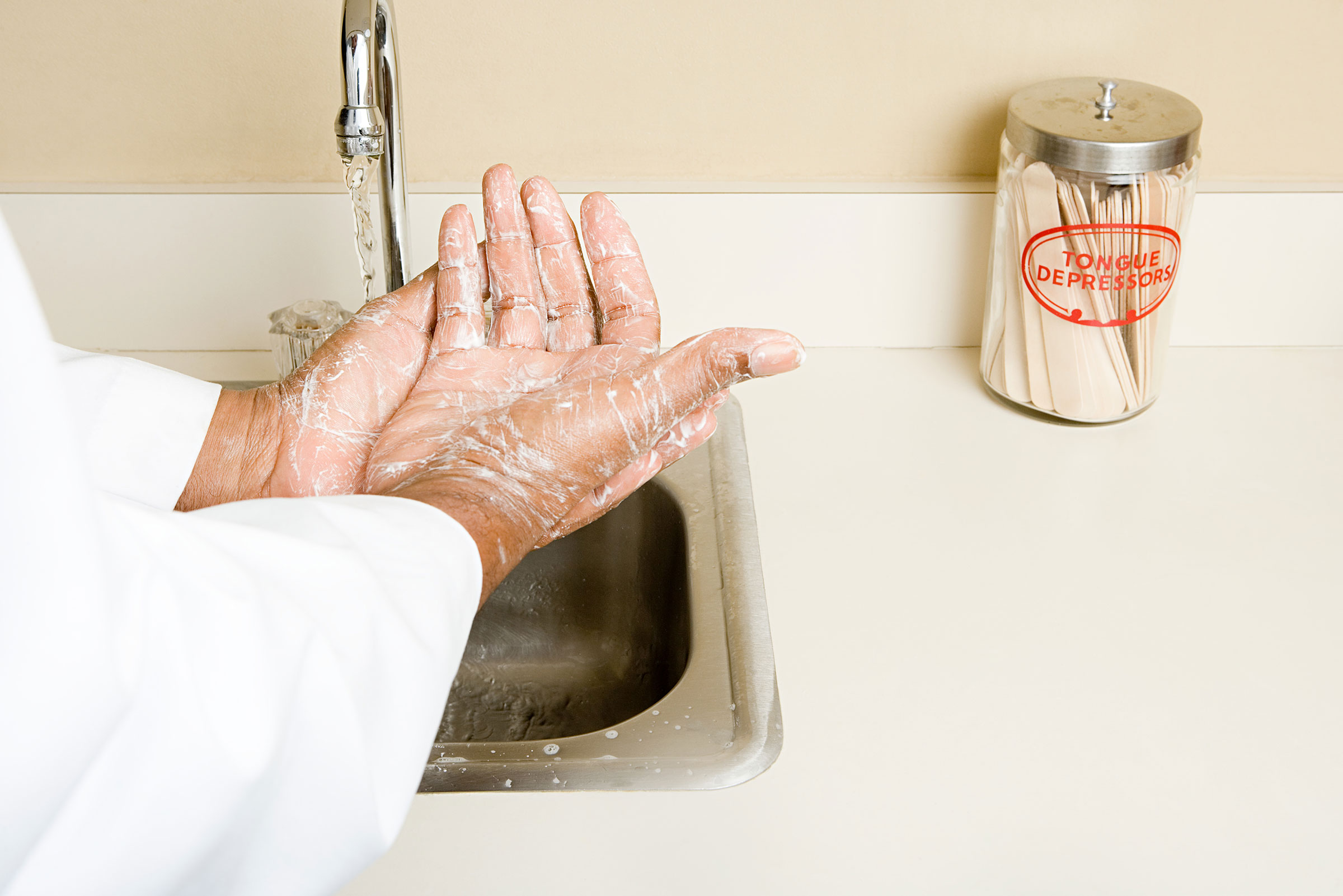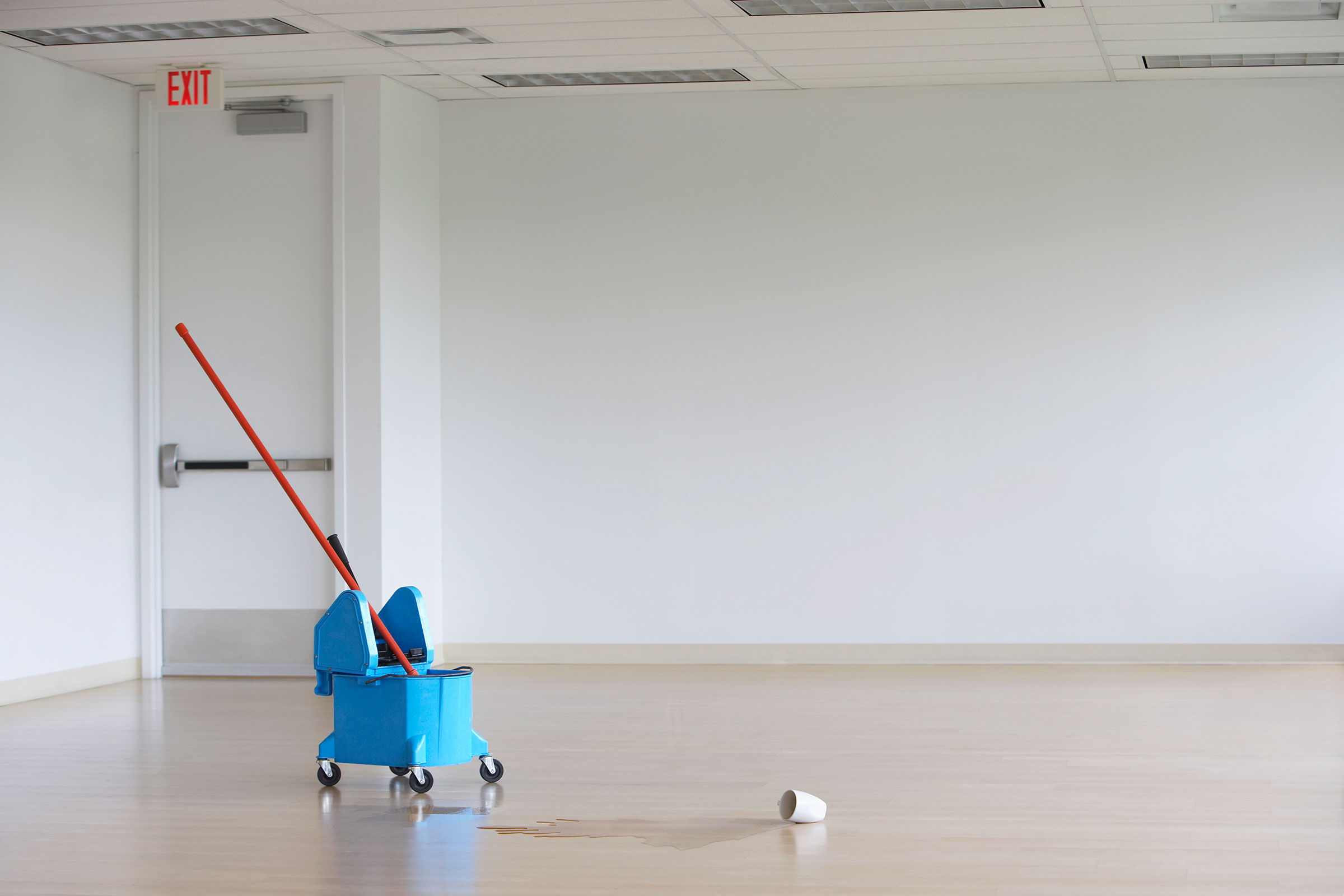
08 Nov Environmental Cleaning
Although the infection control department isn’t directly responsible for environmental cleaning, it is definitely within the scope of responsibility of the infection control department. The literature has shown that hospital environmental surfaces are frequently contaminated with multidrug-resistant organisms and Clostridioides difficile (C. diff). Hands of healthcare workers play a role in spreading the organisms from one surface to another and from surfaces to patients.
A Brief Look At Environmental Sanitary Standards
The Centers for Medicare and Medicaid Services (CMS) infection control standards for hospitals and ambulatory surgery centers contain the verbiage’ sanitary environment’. The interpretive guidance instructs surveyors to look at all areas of the facility for cleanliness as well as horizontal surfaces (floors, countertops, tops of cabinets, etc.)
The accreditation agency surveyors (e.g. The Joint Commission, Accreditation Association for Ambulatory Health Care, Det Norske Veritas Healthcare or DNV) will also look at the cleanliness of a facility since they are surveying not just to their respective standards but must also ensure CMS standards are met in addition to their respective standards.
This means everyone is looking at the cleanliness of the facility in general. CMS is paying particular attention to dietary kitchens in hospitals.
The Basics of Environmental Cleaning
First, let’s look at some of the basics of environmental cleaning. As we all know, cleaning is the first step before disinfection. How is this principle applied to environmental cleaning in healthcare? Cleaning removes soil and helps to decrease the number of microbes through dilution and friction. Disinfection, on the other hand, will kill most organisms by physical or chemical means.
This is an important concept to apply to healthcare cleaning. In practical terms, this means that a disinfectant/detergent will accomplish both cleaning and disinfection in one step. If using a product that is only a disinfectant, cleaning with a detergent must occur as the first step, which means cleaning the surface becomes a two-step process. Although a two-step process is highly effective, it is time-consuming and may not be practical in all healthcare settings such as surgical or procedure rooms, acute care patient rooms, or ambulatory settings due to the need for rapid room turnover.
Another basic principle is to proceed from the cleanest area to the dirtiest. The bathroom is considered a dirty area when cleaning an inpatient room. Therefore, the bathroom should be cleaned after the patient’s room. The last general principle is to clean from top to bottom: perform high dusting first, followed by horizontal surfaces and the floor last. Additionally, policies should clearly state a cleaning pattern, such as clockwise or counterclockwise to ensure all surfaces are cleaned in a given space.
What Should Be Used for Environmental Cleaning
The Centers for Disease Control and Prevention (CDC) recommends an intermediate-level disinfectant for most surfaces in the healthcare environment. An intermediate-level disinfectant is an Environmental Protection Agency (EPA) registered healthcare disinfectant with a tuberculocidal claim. Mycobacterium tuberculosis is used as a ‘marker’ of disinfectant efficacy since it is relatively difficult to kill. A low-level disinfectant is an EPA registered healthcare disinfectant without a tuberculocidal claim and may have claims to kill HIV and/or hepatitis, for example. There are generally three types of disinfectants used in healthcare environmental surfaces: quaternary ammonium (Quats), hydrogen peroxide, and sodium hypochlorite (bleach) solutions.
Although the guidelines don’t recommend a specific type of disinfectant, there are several things to keep in mind. Quaternary ammonium compounds are known to bind to cotton cloths, which can affect the action of the disinfectant, making it less effective. Cotton should not be used with a Quat. Some bleach-based disinfectants may be corrosive to some surfaces. Consider the action of the disinfectant and the types of surfaces to be disinfected and the manufacturer’s instructions for those surfaces to help to determine the best type of disinfectant. Additionally, the EPA publishes lists of disinfectants (based on the organisms they are effective against), which can be found at: www.epa.gov/pesticide-registration/selected-epa-registered-disinfectants.
A disinfectant will only be effective as the label claim if the instructions are followed. Things to consider are using an adequate amount of disinfectant to thoroughly cover the surface and allowing that disinfectant to remain wet on the surface for the amount of time (contact time) recommended by the manufacturer. Disinfectants may need to be reapplied to achieve the correct contact time.
After considering the general principles, what about the types of mops and cloths used for cleaning? Microfiber is widely recommended by various sources, such as the Association for the Healthcare Environment (AHE). Split microfiber is recommended for cleaning cloths, and a flat microfiber mop is recommended for floors. Microfiber doesn’t bind with Quats since it doesn’t contain any cotton.
Some Closing Thoughts
Studies have demonstrated that patient rooms are not always adequately disinfected, with as little as 32% of surfaces properly cleaned in some cases. Recommendations to improve performance include initial training of environmental services staff as well as periodic training or when new products (e.g. cleaning cloths/mops, disinfectants) are introduced. Guidelines recommend using some type of active surveillance such as fluorescent marker, to check the adequacy of cleaning. However, when using any system to test for adequate cleaning, remember to rotate the sites that are tested to prevent having environmental services, staff focuses primarily on the sites they know will be tested.

